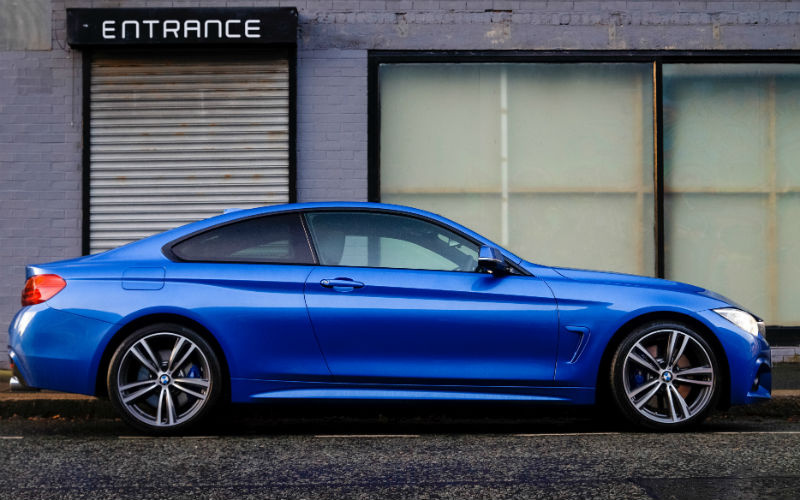How car loan interest works
The interest you pay on a car loan isn't all that different to that charged by home loan lenders. With the exception of 0% car finance (which is another subject entirely), most car loans charge either a fixed or variable interest rate on the amount you've borrowed. That means you're likely to be repaying the amount you borrow, plus interest, on a monthly, fortnightly, or weekly basis over a set period of time.
The interest rate is just one key component of a car loan. Other factors that can influence how much you fork out, in total, include:
- The fees (upfront and ongoing)
- The amount you're borrowing
- The deposit on the car (if any)
- And the length of the car loan
Having a good interest rate on any kind of loan is arguably the most important factor, though. Securing a more competitive interest rate can save you hundreds, if not thousands, of dollars over the life of your car loan.
Car loan repayment calculator
Manually calculating your car loan repayments can be a long and arduous task and doing it yourself opens your calculations up to the possibility of human error, with potentially damaging consequences. Imagine calculating your repayments only to be woefully wrong when the first bill arrives! A good lender should be on top of this before approving your application, though.
Still, there’s no shame in getting an online car loan calculator to do it for you based on your interest rate, loan term, loan amount and payment frequency.
What’s a good interest rate for a car loan?
How long is a piece of string? What makes a good interest rate depends on a number of factors like the lender you choose, your financial status, the age and type of car you wish to buy, and your credit history.
Your interest rate will also likely depend on whether you car loan is secured or unsecured. If your loan is secured, your lender could repossess your car if you fail to meet your repayments. Since secured loans are therefore safer for a lender, they generally come with lower interest rates.
Not to mention, electric or low-emission vehicles (aka ‘green’ cars) can qualify for lower interest rate finance.
But, ultimately, a ‘good’ interest rate has no definitive definition. What's perfect for one borrower probably won't suit another.
Typical car loan interest rate
There are many factors at play when it comes to interest rates, the most impactful being the cash rate. The cash rate is set by the Reserve Bank of Australia (RBA) and can change month-on-month. That means what looks like a good car loan interest rate today, might not be so attractive in a month's time. Or, it might be outstandingly low – only time will tell.
Not to mention, banks and lenders typically offer a variety of interest rates to different borrowers. Car loans secured on new vehicles often have lower rates because the car is less likely to suffer mechanical issues, which could be good news for the lender should they need to repossess the vehicle. Also, a number of lenders offer discounted rates on loans for electric and low-emissions cars, sometimes in a bid to encourage people to buy lower-polluting cars.
If you're interested in what the market is doing when it comes to car loan interest rates right now, take a look at Savings.com.au's comparison tables. While you do so, bear in mind it's unlikely that everyone can qualify for the absolute lowest rate on the market. But, as we’ll demonstrate below, it’s a good idea to try to sign up for the lowest interest rate you can.
You should also consider the comparison rate, not just the advertised rate.
Lenders offering some low interest car loans
Looking for an affordable car loan? The table below features car loans with some of the lowest interest rates on the market.
| Lender | Car Loan | Interest Rate | Comparison Rate* | Monthly Repayment | Interest Type | Vehicle Type | Maximum Vehicle Age | Ongoing Fee | Upfront Fee | Total Repayment | Early Repayment | Instant Approval | Online Application | Tags | Features | Link | Compare | Promoted Product | Disclosure |
|---|---|---|---|---|---|---|---|---|---|---|---|---|---|---|---|---|---|---|---|
5.99% p.a. | 7.12% p.a. | $580 | Variable | New | No Max | $8 | $400 | $34,791 |
| Promoted | Disclosure | ||||||||
6.52% p.a. | 6.95% p.a. | $587 | Fixed | New, Used | No Max | $0 | $350 | $35,236 |
| Promoted | Disclosure | ||||||||
6.28% p.a. | 6.28% p.a. | $584 | Fixed | New | No Max | $0 | $0 | $35,034 |
| Promoted | Disclosure |
What is a comparison rate on a car loan?
A comparison rate is often seen as a representation of the ‘true’ cost of the loan. It reflects the interest rate, inclusive of some fees and revert rates (if the loan has a temporary introductory or honeymoon rate), excluding government fees like stamp duty. It means that a low rate car loan with relatively high upfront and ongoing fees might have a higher comparison rate than its competitors.
Comparison rates are legally required when advertising car loans. And thankfully so – they ensure lenders are open and transparent about the actual cost of a loan.
But car loan comparison rates should only be used as a guide. Particularly as they're all calculated based on the costs of a $30,000 car loan over a five-year term. If you’re borrowing substantially more or less than $30,000 over a longer or shorter loan term, it might be worth comparing the fees yourself.
How to calculate interest rate on a car loan
If you’re adamant about doing the calculations yourself, working out the regular interest payments is done the same way as it is with any loan: Using the standard amortisation formula:
Interest payment = outstanding balance x (interest rate / number of payments per year)
So, let’s say you’ve just borrowed $20,000 (the principal) for a car loan (with no balloon payment) and secured a competitive interest rate (at the time of writing) of 7.5% p.a. Let's also assume you plan to make monthly repayments. In this case, we would calculate the interest payable by following this formula:
20,000 x (0.075/12)
How we got there:
- the outstanding balance is 20,000
- the interest is 0.075 (aka 7.5%)
- number of payments per year is 12
Therefore, the interest-portion of the first month's repayment is: $125
But, as you continue to pay off the loan, your interest payments will shrink, with more of your regular repayment going towards paying off the principal. Allow us to demonstrate.
Over five-years, a $20,000 car loan with a 7.5% p.a. interest rate would likely require 60 monthly repayments of around $401 each.
To work out how much interest you’ll pay in the second month of your loan term you need to calculate how much of the loan is left to repay (your outstanding balance), which you can do using the formula:
Outstanding balance = principal – (repayment – interest cost of preceding repayment)
= 20,000 – (401-125)
= 19,724
In this case, after the first month, your remaining debt would be $19,724. Using that number we can now calculate what your interest payment will be in the second month.
Interest payment = 19,724 x (0.075/12)
= $123.28
See how this number continues to shrink over the first ten repayments:
| Month | Principal | Monthly repayment | Interest paid | Amount owed |
|---|---|---|---|---|
| 1 | $20,000 | $401 | $ 125 | $19,724 |
| 2 | $19,724 | $401 | $ 123.28 | $19,446.28 |
| 3 | $19,446.28 | $401 | $ 121.54 | $19,134.69 |
| 4 | $19,134.69 | $401 | $ 119.59 | $18,853.28 |
| 5 | $18,843.28 | $401 | $ 117.83 | $18,560.11 |
| 6 | $18,560.11 | $401 | $ 116 | $18,275.11 |
| 7 | $18,275.11 | $401 | $ 114.22 | $17,988.33 |
| 8 | $17,988.33 | $401 | $ 112.43 | $17,699.76 |
| 9 | $17,699.76 | $401 | $ 110.62 | $17,409.38 |
| 10 | $17,409.38 | $401 | $ 108.81 | $17,117.19 |
By the end of the five years, the car loan is all paid off, with the total interest payable being more than $4,000. So on that $20,000 car loan, you’ve actually paid $24,060.
Source: calmaccer
Saving money on car loans is cool, not nerdy.
How interest rates affect car loan repayments
The interest rate of your car loan is likely the biggest factor that impacts how much you pay on your car loan repayments (besides the cost of the car itself). A 7.5% interest rate on a $20,000 loan is obviously going to cost less over five years than the same loan with a 10% interest rate.
Thus, the lower the interest rate, the better (in most cases). The table below shows how much of a difference a lower interest rate can make to the total cost of the loan.
Total cost of a loan over five years
| $20,000 loan | $30,000 loan | $50,000 loan | |
|---|---|---|---|
| 7.5% interest rate | $24,060 | $36,068 | $60,114 |
| 10% interest rate | $25,496 | $38,245 | $63,741 |
| 15% interest rate | $28,548 | $42,822 | $71,370 |
Source: Savings.com.au Car Loan Calculator
The difference between a lower interest rate (7.5%) and a higher one (15%) is nearly $4,500 over the life of our figurative loan. Not everyone can qualify for lower rates, but if you can it might be worth your while to shop around to find one.
What else can impact your car loan repayments?
As readers can see in the table above, the amount that a borrower receives from a lender can have a significant impact on how much they end up paying over the course of the loan's life. Interest repayments of 7.5% on a $30,000 loan will be more than those demanded by a $20,000 loan with the same interest rate. But there are other factors that can reduce or increase the total cost of a car loan.
If a person wants to borrow more but can't afford higher regular repayments, they might consider taking on a loan with a longer term. Generally, the longer the loan term, the longer a borrower will be paying it back and the more interest they'll incur as a result.
That means they might end up forking out less for repayments each week or month, since they'll have more time in which to pay down their debt, but they'll likely pay more interest overall. Just take a look at the below table, depicting the total cost of loans with terms of seven years:
The total cost of a loan over seven years
| $20,000 loan | $30,000 loan | $50,000 loan | |
|---|---|---|---|
| 7.5% interest rate | $25,769 | $38,653 | $64,420 |
| 10% interest rate | $27,890 | $41,835 | $69,725 |
| 15% interest rate | $32,418 | $48,628 | $81,046 |
Source: Savings.com.au Car Loan Calculator
By comparing the total cost of a seven year loan over that of a five year loan, it becomes clear that spreading a car loan out over a couple more years could potentially leave a person paying hundreds or even thousands of dollars extra.
Another thing that can influence the cost of your loan is the frequency in which you repay it. Most lenders offer monthly repayments as a default, but you might have the option of paying fortnightly or even weekly repayments as well. By increasing the frequency of your repayments, you could reduce the total interest you incur.
Let’s take another look at the total cost of a car loan with a 7.5% interest rate over five years, but with weekly and fortnightly repayments instead of monthly.
Total cost of a loan over five years, paying weekly, fortnightly, and monthly
| $20,000 loan | $30,000 loan | $50,000 loan | |
|---|---|---|---|
| Weekly repayments | $23,980 | $35,968 | $59,948 |
| Fortnightly repayments | $23,980 | $35,970 | $59,949 |
| Monthly repayments | $24,047 | $36,068 | $60,114 |
Note: This assumes the lender calculates weekly and fortnightly repayments as the annual repayment divided by 52 and 26, respectively
As the above chart shows, while more frequent repayments can reduce the total cost of a car loan over its life, it doesn't always make a huge difference (depending on how the lender calculates weekly or fortnightly repayments). Paying weekly or fortnightly repayments might make a worthwhile impact on, say, a home loan – assuming a borrower has taken on a large debt – but when it comes to smaller car loans, it might only save you the cost of a few cups of coffee.
Not to mention, not all lenders offer weekly or fortnightly repayments.
It's also worth noting that some lenders don't break down their repayment schedule by weeks or fortnights in the way you might assume. Rather, some simply divide a person's monthly repayments in half or into quarters and charge that amount fortnightly or weekly. But, since there are (for the most part) more than four weeks in a month, that could mean you end up paying higher repayments and, therefore, pay your principle balance off faster. If you're in the market for a car loan, it might be worth asking your preferred lender how they calculate their weekly or fortnightly repayments.
Balloon payments can affect car loan repayments
Another common tool many borrowers use to reduce their regular repayments is a balloon payment. A balloon payment is a portion of a loan a borrower must repay as a lump sum at the end of their loan agreement. These balloon payments can be significant – typically between 30% and 50% of the loan amount – and can be an effective way for people to make their repayments more manageable by reducing the amount they're paying back during the loan term.
However, interest is charged on the balloon amount over the entire course of the loan. That means you'll likely end up paying more interest over the total loan's term, since you don't pay down the value of the balloon payment over time. And while it can drive down your regular repayments, you'll still have to pay that lump sum back at the end – a factor that could catch some people out.
Let’s look at an example. If you took out a $30,000 car loan for 5 years with a 7.5% interest rate and had a (30%) balloon of $9,000, your monthly payments would be reduced from $601 (no balloon) to $477 (with balloon). At the end of the loan term, you would have to repay the remaining $9,000 balloon payment in full.
| Cost of a $30,000 5 Year Car Loan at 7.5% Interest Rate (Excl. fees) | 30% Balloon | No Balloon |
|---|---|---|
| Monthly repayments | $477 | $601 |
| Total repayment over 5 years | $28,623 | $36,068 |
| Balloon payment | $9,000 | $0 |
|
Total interest cost |
$7,623 | $6,068 |
Source: Savings.com.au Car Loan Calculator
As the above table shows, while having a balloon payment can lower a borrower's regular repayments significantly, it also typically sees them paying more in interest over the life of their loan (more than $1,500 extra, in this case).
How to get a lower car loan interest rate
In addition to the oft-parroted advice - do your research and shop around (both incredibly important) - you might be able to secure a lower car loan interest rate by doing some (or all) of the following:
- Improve your credit score: Improving your credit score might make you eligible for more competitive car loans
- Cleaning up your finances: Someone with sizable outstanding debts might be less likely to get a competitive car loan, or could even be rejected by a lender
- Demonstrate savings skills: Lenders like to see a history of solid savings as it helps to prove a borrower has the discipline needed to continue to meet repayments
- Consider buying a ‘green’ car: Some lenders offer ‘green’ car loans, typically with lower interest rates, for electric or low-emissions cars – meaning you could save money while saving the planet
- Look to a lender over a dealer: While it's not always the case, financing through a car dealer will usually see a person with a higher interest rate than those offered by car loan providers
- Go secured over unsecured: Generally, secured car loans offer lower interest rates than unsecured car loans, as the car itself is used as security against the loan and the lender can repossess it if you fail to meet your repayments
You might also have come across the term '0% car finance', which is a car loan that only requires repayments on the principal without any interest. Such offerings might seem cheaper than traditional car loans, but that's not usually the case. Typically, 0% finance deals see a buyer paying more to buy the car to begin with. If the price is inflated enough, it can negate any potential savings from dodging interest.
Savings.com.au’s two cents
The decision to take out a car loan is a big one, as is signing up for any finance product. Perhaps the most important factor to consider when looking for a suitable car loan is how much you can afford to repay – a component you should ideally work out before signing on the dotted line. If you're unsure, or simply don't want to do the math, you can turn to an online car loan calculator like that provided by Savings.com.au.
It can help you work out your estimated monthly, fortnightly, or weekly repayments, with and without a balloon payment. Some other things that could impact your regular repayments include:
- Your loan's interest rate
- The amount you're borrowing
- How long you take to pay it back
- The frequency in which you make repayments
- The size of your balloon payment (if you have one)
And remember: Just because you've signed onto a particular car loan, doesn’t mean you’re stuck with it. Review how much you’re spending on your car loan every once in a while to see if you can refinance to a more competitive one. You could save hundreds or thousands of dollars if you do.
First published on July 2019
Photo source: Adobe







 Denise Raward
Denise Raward
 Harry O'Sullivan
Harry O'Sullivan

 Hanan Dervisevic
Hanan Dervisevic


